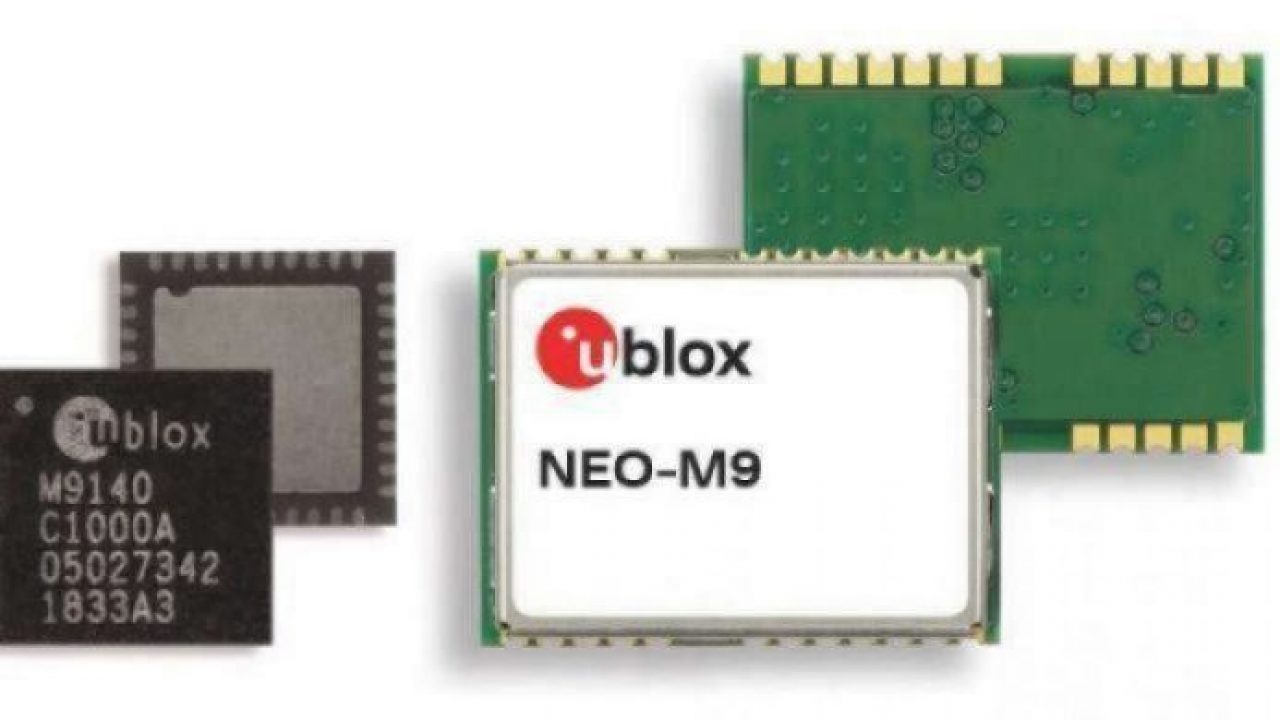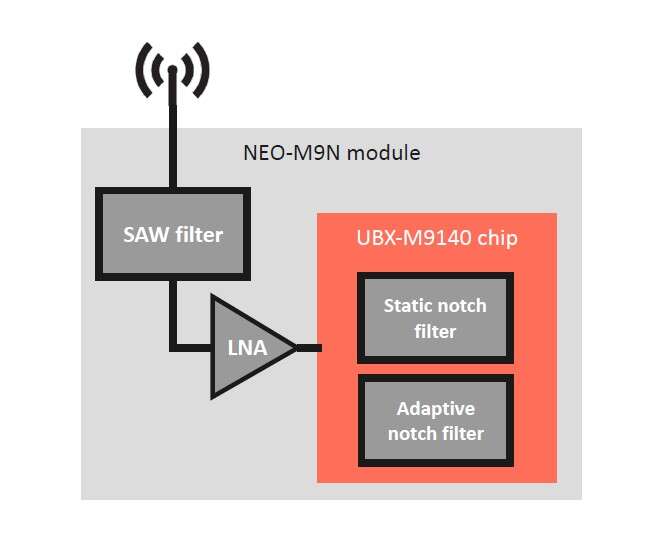Chip Developed to Improve GNSS Positioning Accuracy
Article By : Nitin Dahad

Meter-level positioning accuracy and detection of spoofing attacks are offered by the new GNSS platform.
Two of the key challenges for positioning technology are accuracy, especially in dense urban areas, and the ability to trust the reported position of a device. With the launch of its new M9 global positioning technology platform, u-blox says it can address these issues better with the ability to receive up to four GNSS constellations concurrently to get meter-level positioning accuracy and detect spoofing attacks when combined with special RF filtering and detection algorithms.
Based on a new GNSS (global navigation satellite system) chip, UBX-M9140, the M9 technology platform provides positioning and security features to protect the integrity of applications in automotive, telematics, and UAV markets. The platform can receive signals from up to four GNSS constellations (GPS, Glonass, Beidou, and Galileo) concurrently in order to achieve positional accuracy of up to 1.5 meters even in difficult conditions such as deep urban canyons. It also provides a position update rate of up to 25 Hz, enabling dynamic applications like UAVs to receive position information with low latency.
In a briefing with EE Times, Bernd Heidtmann, a product manager for GNSS at u-blox, highlighted the security challenges for GNSS devices, especially spoofing attacks. “In automotive applications, where a GNSS device reports the wrong time or position, it could destroy the business model of a company that relies on a vehicle’s exact location,” for measuring usage and billing, for example. He said an attack could easily be done with reasonable low-price equipment. “The u-blox M9 monitors all four received GNSS signals and by performing various consistency checks can detect a spoofing attack and report it to the host.” Together with advanced detection algorithms, the platform reports fraudulent attacks quickly so that users’ systems can react to them in a timely fashion.

Detecting and mitigating RF interference
(Source: u-blox)
Detection and mitigation of RF interference to allow normal operation even with strong RF interference (for example when a cellular modem is co-located with the platform) is enabled with a notch filter offering RF in-band filtering of small bandwidth signals with static or varying frequencies in the UBX-M9140 chip. To reduce the impact of outband RF interference, the NEO-M9M, the first module featuring the new chip, integrates a surface acoustic wave (SAW) filter combined with a low noise amplifier (LNA) in the RF path.
Heidtmann added that the company re-designed the chip architecture in the M9 compared to its existing M8 platform. Unlike the M8, the firmware in the u-blox M9 can be upgraded by uploading the firmware image from flash memory or from the host to the GNSS. The ability to upload from the host saves the cost of a flash and reduces the amount of space on the host board.
u-blox said developers using the M9 will also be able to design using a single PCB and then migrate to a different positioning technology, such as dead reckoning augmenting GNSS technology, with very little change to the board design. In order to evaluate the new platform u-blox is releasing the Explorer Kit, a miniature plug-and-play device supplied with user-friendly u-start software, which includes a number of preset scenarios to enable users to explore the performance.
The u-blox M9 technology platform complies with the ISO/TS 16949, ISO 16750, AEC-Q100 standards. Engineering samples of the NEO-M9N, the first module based on the M9 platform, the UBX-M9140 high performance chip, and the Explorer Kit are available now.
Subscribe to Newsletter
Test Qr code text s ss


